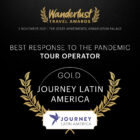Knowing Nicaragua

"Where are we?" I felt compelled to ask as we headed through a rubble-strewn no-mans-land with dipped headlights and a visibly nervous driver. "Tipitapa", he replied, "I must keep the headlights low, I don’t want to attract attention".
Tipitapa - what a beautifully rhythmic name for such a godforsaken place I thought, as my friend puffed on his first cigarette in six months.
Despite volcanic eruptions and an equally explosive civil war, Nicaragua remains a beautiful country where the people display an unparalleled resilience of spirit.
Our taxi driver had taken a short cut through Managua that was anything but scenic, but despite not wanting to attract attention from undesirables wishing to ‘taxi jack’ us, he left the twinkling Virgin Mary bobbing brightly on the dashboard and the stereo turned up.
As we drove out of the capital tension turned into relief and upon arriving in Granada relief into pleasure - although it was too dark to fully appreciate the colonial architecture, it was a far cry from Managua and a safe enough distance from that tip Tipitapa.
Founded by the Spanish in 1524,Granada was one of the finest colonial cities in the Americas until American filibuster and all-round bad guy William Walker torched it to the ground in 1856. Today, having been carefully restored to its former glory, Granada is one of Central America’s most charming cities with an air of serenity that instantly makes you feel at ease.
The terrace of the mustard-coloured Hotel Alhambra provides the perfect place to sit and watch the comings and goings of the palm shaded plaza below, where old men while away afternoons and children play around the band stand. On the steps of the impressive cathedral other children, less carefree, try to eke out a living from shining shoes or selling packs of gum.
Leading down to the shores of Lake Nicaragua the city’s main drag Calle La Calzada is lined with a delightful, multi-coloured spread of colonial buildings reminiscent of a packet of Love Heart sweets.
A few days later we were back on the road again, this time on a rattling old bus to San Jorge, the ferry port for trips to Ometepe Island, spectacularly located in the middle of Lake Nicaragua.
Boasting two proud Fujiesque cones, Ometepe Island’s majestic twin peaks could be described in many ways, but from a man who likes his chocolate, giant walnut whips seemed most appropriate. As we crossed by ferry to Moyogalpa, Concepción and Maderas volcanoes remained firmly in our sights. The view was exactly as Mark Twain had once recalled: out of the midst of beautiful Lake Nicaragua spring two magnificent pyramids, all flecked with shadow and sunshine, whose summits pierce the billowy clouds.
On arrival at the dock it was hard to imagine that Moyagalpa had changed since Twain’s visit. Now slightly larger and marginally busier than a one-horse town, it has the kind of welcoming atmosphere that beckons you to stop for a beer.
Our destination was Santo Domingo beach - a long stretch of chalky-white volcanic sand fringed by wind-bent palms. The journey across the island took us on dusty roads through banana plantations, passing farmers herding cattle and labourers returning from the fields. Little boys played baseball in the street with a stick and bottletop as the ever present urracas (long-tailed blue jays) flew overhead.
A creature not so common is the fresh-water shark. Lake Nicaragua is said to be the only place on earth where they exist. I asked our driver if he had ever seen one: "Maybe one or two" he replied unconvincingly. If there were sharks out there they obviously posed no threat to the women of Ometepe who stood knee-deep in the lake scrubbing their clothes on wooden washboards. While they toiled their children dived into the water from the backs of patient horses.
We asked our driver to drop us at the idyllic Hotel Paraíso, but it was full so we checked in next door at a basic wooden, ramshackle place where the staff did their best to typify the sleepiness of Ometepe. An orange juice would appear as a melon juice long after you’d forgotten you’d ever ordered anything. After switching to cuba libres (rum and Cokes), it wasn’t long before our London sense of urgency and misplaced self-importance had faded away and we’d slipped effortlessly into Ometepe’s timeless, stress-free way of life.
After a few lazy days, reading in hammocks and sunbathing on the beach, we opted for something more energetic - to climb the 1394m-high Volcán Maderas. Setting off from the village of Balgüe, we trekked through open pasture on the lower slopes enjoying spectacular views across the island and to the lake beyond.
The higher we climbed the muddier the trail became and the more the jungle surrounded us. Strangler fig trees fought for light above our heads, hanging down like dreadlocks from the canopy, as howler monkeys barked and parrots squawked in the distance. A few hours later we had made it to the summit for a fleeting glimpse of the beautiful crater that lay below. Within minutes a thick mist had completely enshrouded us.
Back down at lake-level again, the midday sun was now high in the sky and any trace of cooling volcano mist had long since burnt off. Upon our return we collapsed in our hammocks and ordered two juices from the friendly but increasingly lethargic waiter. "What flavour?", he inquired as an afterthought on his way back to the kitchen. "Surprise us" we replied.
Tailor-made holidays
Flexible, custom-made holidays to Latin America created to match your exact requirements: our tailor-made itineraries are as unique as the clients for whom they are designed.
Design my trip


























